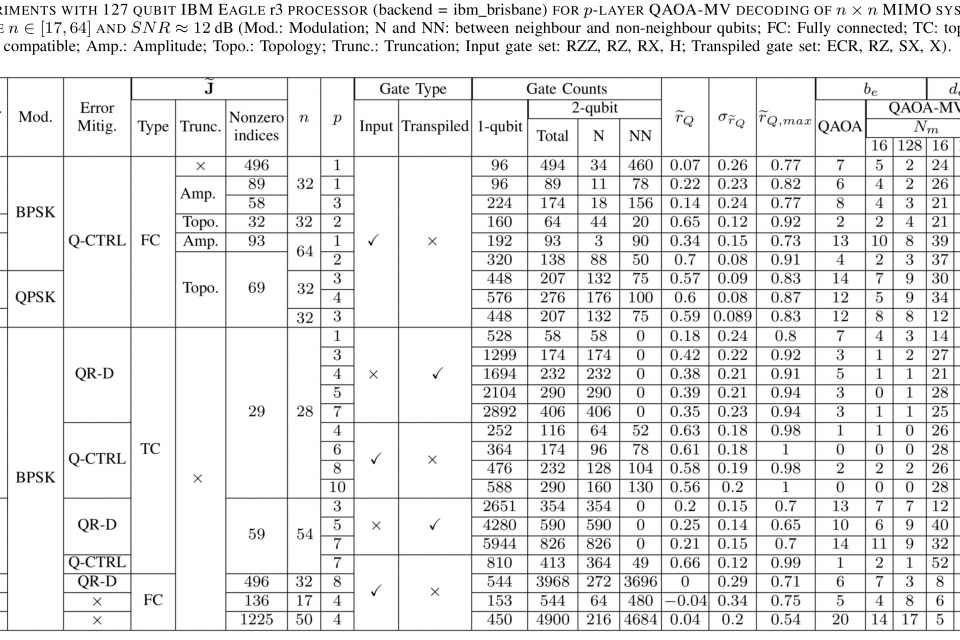Datasets
Standard Dataset
Majority Voting with Recursive QAOA and Cost-restricted Uniform Sampling for Maximum-Likelihood Detection in Massive MIMO
- Citation Author(s):
- Submitted by:
- Burhan Gulbahar
- Last updated:
- Sun, 01/26/2025 - 12:08
- DOI:
- 10.21227/th8x-3r75
- Research Article Link:
- Links:
- License:
 384 Views
384 Views- Categories:
- Keywords:
Abstract
The data repository contains data sets obtained with Quantum-approximate optimization algorithm (QAOA) simulations and experiments for the main article in [1]. For a comprehensive understanding, please check readme_qaoa_mvsic.pdf file and refer to the main article in [1]. We design, theoretically model, simulate and experiment QAOA-MVSIC algorithm combining QAOA, majority voting (MV) and successive interference cancellation (SIC) to target experimental challenges of QAOA for maximum-likelihood (ML) decoding for n × n massive multi-input multi-output (MIMO) systems with large n. QAOA experiments are performed in IBM Eagle r3 quantum processor with 127 qubits in IBM Qiskit Runtime (QR). Simulation results for quantum circuits are obtained by using Qiskit. We simulate Binary Phase Shift Keying (BPSK) and Quadrature Phase Shift Keying (QPSK) modulated massive MIMO decoding with QAOA-MVSIC for n = 24 and 12, respectively, while experiments are performed for n in the interval [17, 64]. QAOA circuit output strings for simulations and experimental tests on the IBM Eagle r3 processor, along with measured values including cost based parameters are provided for all instances. Simulation and experimental parameters, including optimized angles, error mitigation settings, circuit diagrams and problem-specific values including channel gain matrix and transmitted symbol are provided.
[1] B. Gulbahar, "Majority Voting with Recursive QAOA and Cost-restricted Uniform Sampling for Maximum-Likelihood Detection in Massive MIMO," in IEEE Transactions on Wireless Communications, DOI: 10.1109/TWC.2024.3523135.
The readme_qaoa_mvsic.pdf file provides a detailed explanation of the contents of each file included in the dataset. Data set files are compressed into zip files. The data repositories for our experiments and simulations can be reached with the links specified in readme_qaoa_mvsic.pdf by using Amazon Web Services (AWS) where IEEE DataPort files are stored. Each zip file contains folders and files that are described in the readme_qaoa_mvsic.pdf file. Please extract the zip files to access the full data structure and refer to readme_qaoa_mvsic.pdf for guidance on the contents and organization of the files. Additionally, ensure that you have the necessary software, such as MATLAB for .mat files and the Python pickle library for .pkl files, to view and analyze the data files properly.
Dataset Files
- experiment_QAOA_angles.zip (6.39 kB)
- experiments_QAOA.zip (3.58 MB)
Documentation
| Attachment | Size |
|---|---|
| 320.16 KB |








